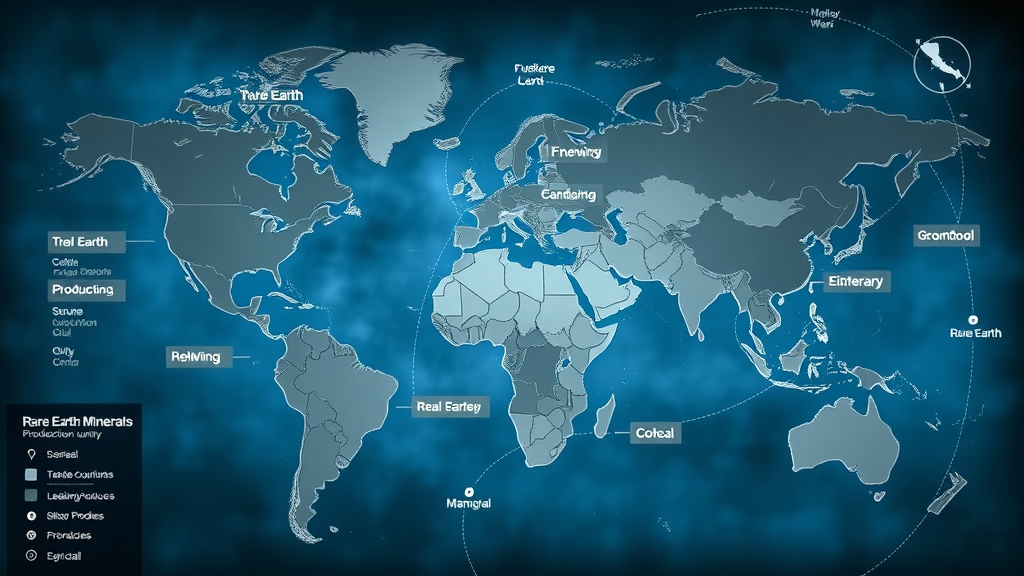Why Workforce Development is the Key to Future-Proofing Your Career
In today’s fast-changing economy, many people worry about landing good jobs—or losing the ones they have. New technology, shifting industries, and global competitions mean that what you know now may not be enough for tomorrow’s workplace. Did you know that just in Lancaster County, there were over 7,000 active job postings as of March 2025, highlighting how demand for different skills keeps changing? So, how do people keep up and thrive? The answer lies in one powerful concept: workforce development.
When it comes to career success, workforce development stands out as a vital foundation. It’s much more than job searching or basic training; it’s a dynamic strategy for developing the skills employers want, while also preparing individuals for a rapidly evolving workforce. Whether you are a student, a job seeker, or someone looking to restart after a setback, understanding workforce development can unlock new opportunities and security. This approach doesn’t just help individuals. It strengthens businesses and the entire community, creating a robust workplace ecosystem that’s built for lasting success.
With so many resources, programs, and support systems available, ignoring workforce development could leave you struggling while others move ahead. By actively engaging in these opportunities, you put yourself on the path to not only land a job but to shape a career that grows with you. In the following sections, we break down workforce development, its unique benefits, and why staying educated about its possibilities is a smart move for anyone seeking to secure their future.

The Building Blocks of Workforce Development: Essential Skills for a Changing Economy
Workforce development is more than just a catchphrase—it's a vital process that connects education, training, and work experience, helping people of all ages secure sustainable employment. At its core, workforce development means giving everyone access to economic mobility. This encompasses preparing young adults to take their first steps into the job market, supporting those who need to re-enter after a period away, and guiding experienced workers to upskill or reskill as industries evolve. With connections to resources like PA CareerLink®, job seekers can search thousands of opportunities and explore tailored training designed to fit the ever-changing landscape.
Without an understanding of workforce development, individuals risk falling behind as technology and best practices shift. Many assume a traditional education or years on one job are enough until they face the reality of layoffs or limited growth. The potential for missed opportunities—such as specialized training, certificates, or support networks—can mean the difference between career stagnation and upward mobility. Moreover, ignoring the broader context of labor market trends may leave both individuals and businesses scrambling to adapt, rather than staying ahead of change. Staying informed and engaged with workforce development solutions is not just smart—it could be the deciding factor for long-term career success.

How Workforce Development Creates Real Opportunities for Job Seekers and Employers
The Lancaster County Workforce Development Board stands as a prime example of what effective workforce development can achieve, aligning fiscal resources and providing both direction and support for jobseekers and businesses alike. Through strategic partnerships, they act as the connecting point between individuals looking for work and employers searching for top talent. Their approach is rooted in the understanding that every community is unique and requires flexible, personalized solutions that bring about real results.
One of the most impactful benefits of workforce development is its clear pathway from training and education to hands-on experience and job placement. Instead of a one-size-fits-all approach, workforce development adapts to the distinct needs of both the labor market and the diverse backgrounds of job seekers. By providing access to targeted training, such as industry-recognized certificates and specialized programs, individuals are empowered to secure sustainable, well-matched jobs—not just temporary gigs. Employers, too, gain access to a pool of skilled candidates ready to contribute to local economic growth. The outcomes are lasting: improved job stability, higher employment rates, and thriving businesses that support a healthier community overall.
From Classrooms to Careers: Bridging the Gap with Purposeful Training

A major pillar of workforce development is its ability to bridge educational experiences with workplace needs. Programs like the Educator Industry Tours offered in Lancaster County offer a direct connection between what is taught in schools and what local businesses require. These initiatives allow educators to gain firsthand insights into the evolving expectations of employers, ensuring that curriculum and career advice are aligned with real-world opportunities.
This collaboration leads to more relevant training and ensures that young adults are not just educated but actually prepared for the demands of today’s workplace. By prioritizing a strong connection between training providers and industry leaders, workforce development creates pathways that are practical and efficient—making it possible for people to move seamlessly from school to meaningful employment.
Staying Ahead: The Power of Labor Market Data and Career Resources
Another unique advantage of workforce development lies in its reliance on up-to-date labor market data and ongoing career resources. The Lancaster County Workforce Development Board collects, analyzes, and reports on vital metrics to identify trends and forecast what skills will be needed most. This data-driven approach equips both individuals and employers with the knowledge required to make smart decisions, like which careers are in high demand or what training programs provide the best outcomes.

Access to these insights means job seekers can target their efforts on the most promising fields, saving time and increasing their chances of success. For employers, understanding workforce trends supports better hiring and upskilling strategies, strengthening both their teams and their bottom line. In a constantly evolving job market, staying informed is a competitive advantage for everyone involved.
Economic Mobility for Everyone: Removing Barriers and Fostering Inclusivity
One of the foundational philosophies behind effective workforce development is the belief that economic advancement should be accessible to all members of a community. This is reflected in outreach to young adults, programs for those re-entering the workforce, and outcomes-based support for people of varied experiences and backgrounds. With resources ranging from specialized job placement to career counseling and reassurance of equal opportunity, workforce development transforms lives by making sure that no one is left behind.
Programs are designed not just to get individuals into any job, but to help them find meaningful, lasting work that matches their unique skills and aspirations. This focus on inclusivity and support fosters a stable local workforce, where people are more likely to achieve satisfaction, security, and ongoing growth in their chosen careers.
The Lancaster County Workforce Development Board’s Community-Driven Approach to Growth
The Lancaster County Workforce Development Board articulates a unique mission: building a stronger workforce together by recognizing and connecting the diverse strengths of the community. This local focus is apparent in their commitment to aligning fiscal resources and providing strategic direction for both jobseekers and employers within Lancaster County. Leveraging their network and in-depth understanding of the regional workforce, they tailor solutions that resonate with local needs and opportunities.
Their operational philosophy blends practical support with visionary leadership, serving as the bridge between federal, state, and local programs. By acting as “boots on the ground,” they turn good ideas into measurable results—whether that’s matching the right candidate to the right job or supporting businesses looking to expand with trained professionals. Their emphasis on gathering and sharing labor market data not only informs their strategies but strengthens the whole region’s ability to adapt and thrive in the face of change. Through ongoing collaboration with educators, businesses, and community organizations, the Lancaster County Workforce Development Board helps create a vibrant, opportunity-rich environment for today’s—and tomorrow’s—workers.
What Success Looks Like: One Job Seeker’s Journey
When exploring how workforce development can transform lives, firsthand experiences offer the most compelling insights. Many people initially approach these programs feeling uncertain or overwhelmed. However, with the right mix of guidance, training, and persistent effort, remarkable change is possible. Consider the story shared by someone who found their path through the Lancaster County Workforce Development Board:
A place where if interested,has courses that can get u in places.If ur destined to be,u will be.They have a staff that's willing to assist u.All u need to do here is the legwork.Once u get the legwork in,like apply ur time,and study,they put u in the actual vocation.Then u study there,and u get the completion,the certificate,and the job ur been looking for.It can be easy to get a job,get laid off,find another one,but this place here backs u in actually getting u a permanent job,so u won't have to keep looking.Theres a success rate,and one can be successful if one can be comfortable being uncomfortable in order to be successful.Give it a shot,and u will see the results!
The power of workforce development is reflected in stories like these. By taking action and leveraging available resources, individuals experience real movement from uncertainty to stability, building the skills and confidence needed for fulfilling careers. Engaging with workforce development doesn't just create a job; it sparks momentum for long-term success and personal growth.
Why Staying Informed about Workforce Development Sets Careers Apart
Understanding and engaging with workforce development is no longer optional—it’s essential for anyone hoping to grow in today’s workforce. By leveraging the insights, strategic direction, and personalized support that organizations like the Lancaster County Workforce Development Board offer, job seekers and employers alike gain substantial advantages. Access to current labor market data, pathways to recognized credentials, and responsive support systems are what set successful career journeys apart from the rest.
As industries continue to change and new fields emerge, those who invest in workforce development secure adaptability, confidence, and access to sustainable careers. In this evolving landscape, the Lancaster County Workforce Development Board’s expertise and comprehensive approach underscore the importance of staying informed and proactive. Making the most of workforce development resources now lays the foundation for future-proofing your career and unlocking advancement for years to come.
Contact the Experts at Lancaster County Workforce Development Board
If you’d like to learn more about how workforce development could benefit your career journey, contact the team at Lancaster County Workforce Development Board.
📍 Address: 1046 Manheim Pike, Lancaster, PA 17601, USA
📞 Phone: +1 717-735-0333
🌐 Website: http://www.lancastercountywib.com/
Lancaster County Workforce Development Board Location and Hours
🕒 Hours of Operation:
📅 Monday: 8:00 AM – 4:30 PM
📅 Tuesday: 8:00 AM – 4:30 PM
📅 Wednesday: 8:00 AM – 4:30 PM
📅 Thursday: 8:00 AM – 4:30 PM
📅 Friday: 8:00 AM – 4:30 PM
📅 Saturday: ❌ Closed
📅 Sunday: ❌ Closed

 Add Row
Add Row  Add
Add 





Write A Comment